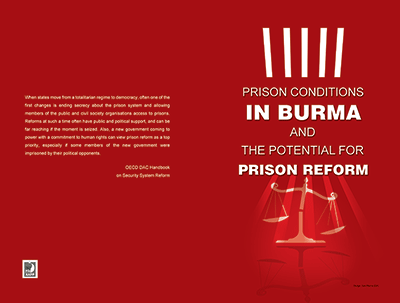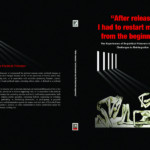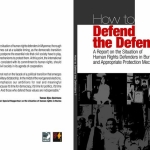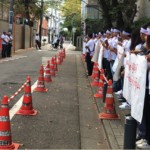Report by Assistance Association for Political Prisoners (Burma) (AAPP) | September 26, 2016
Executive Summary
As Burma emerges from decades of authoritarian rule and international isolation, the issue of human rights and human rights abuses has been of large concern to many actors involved. Holding those accountable for crimes committed in the past has been at the forefront for many observers. However, Burma must also take steps toward ensuring that the opportunity for such abuse is removed and cannot be repeated in the future.
Prisons are one such place where abuses are particularly likely to occur. They are hidden from the public eye, and prisoners are shown little sympathy by the general public. This creates an environment of increased impunity, which in turn leads to the violation of basic human rights for many individuals. This is true for both political prisoners and criminal prisoners alike. Reforming the prison system, although perhaps not politically expedient, is therefore crucial to eliminating human rights violations.
This paper, therefore, is a preliminary assessment of the potential for such a reform in Burma. The research is ongoing and will hopefully provide a valuable resource for other individuals and organizations interested in the penal system in Burma and its reform. It is meant as a foundation from which to work from and build upon.
Section 1: provides a summary of the paper. It first delineates the reasons for undertaking such a project. A brief overview of the international soft and hard law related to prisons, the domestic legislation pertaining to the same topic, and the current prison conditions in Burma are then provided. The sections that follow this expand upon these topics, providing greater detail and analysis of these broad findings.
Section 2: outlines the major issues that have been identified in the research. For each issue, the analysis will follow a similar model. First, the international rules and norms pertaining to that issue will be high- lighted, as well as any other relevant international human rights literature. Second, any domestic legislation on the topic (if it does in fact exist) will be presented and analyzed in the terms set out by international rules and norms. Third, the actual conditions in Burma’s prisons will be assessed and compared to both the stated legislation in the country as well as the international normative framework pertaining to prisons.
Section 3: suggests potential reform projects, which have been divided into legislative and operational reform projects, and outlines their benefits.
Section 4: identifies some of the key challenges to reform.
Section 5: makes a number of suggestions on areas for further research.
Section 6: makes a number of recommendations to the government, political parties and civil society groups of Burma and to the international community.





![‘We Need More [International Support] in Kachin State’: Ah Ze, General Secretary of AKYU — PART 2](https://www.burmalink.org/wp-content/uploads/2018/10/Ah-Ze-in-Kachin-State--150x150.jpg)

